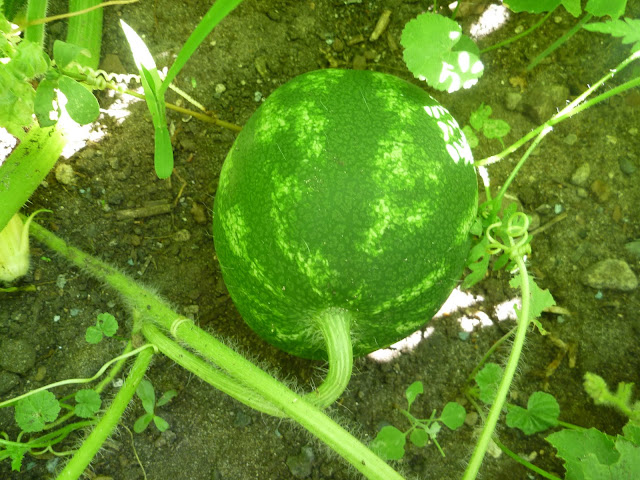Whew! July has been a very, very busy month! Michael and I purchased a half of a cow share through Green Pastures in Coopersville, and we receive 1.5 gallons of luxurious, raw cow milk each week. With our unpasteurized milk we have made yoghurt, ice cream, and, best of all, curds and whey. We let the milk sit out for three days before it had separated significantly, and then we strained out the whey from the curds. Those chunky little curds got all smooshed together to make cream cheese and the whey was set aside for lacto-fermenting veggies later on. To be honest, I was pretty nervous about eating the cream cheese that was made only by letting the milk sour. We spread the cheese on some homemade crackers and topped it with some of last summer's red jalapeno jelly and oh boy, was that good! I didn't think twice about devouring the last of the crackers with some cheese.
If you have some form of access to raw grass-fed cow's milk or raw goat milk, I highly recommend you take the opportunity. So many people are terrified to drink unpasteurized milk, but the reality is that before the late 1800's when pasteurization was "invented", everybody drank or used raw milk. Not only does raw milk taste better, it is also better tolerated by those folks who are somewhat lactose intolerant. Raw milk contains the enzyme
lactase, which helps digest the milk sugar
lactose, which in turn helps those who cannot digest
lactose to actually be able to consume it and have little to none ill-effects. That being said, if you are lactose-intolerant, try drinking raw milk in very small amounts to see how it affects your body first rather than consuming lots and assuming that you will be free of side effects.
There will be more talk here of milk, of that I am sure, but there will also be talk of fruits and veggies as well. Tomorrow Michael and I are going to Frankfort to
pick organic tart cherries and enjoy a picnic lunch. My hope is that we can pick 50 lbs of sour cherries for drying, freezing, and juicing. I am very sure we can reach that goal...
























